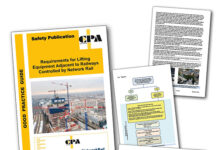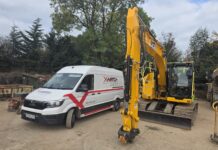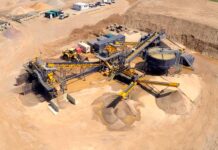
This article contains paid-for content created in collaboration with Reece Safety.
In work environments where hazards are plenty, it’s important that certain health and safety strategies are in place to protect workers. This can include solutions such as implementing effective communication across site and ensuring a high level of training for employees. In order to ensure a safe system of work however, another consideration is to ensure that the correct personal protective equipment is worn. Here, Reece Safety will explore some top tips for choosing the correct personal protective equipment.
What is Personal Protective Equipment
Personal Protective Equipment encompasses any form of equipment which can help to minimise the risk of injury within the workplace. It can include anything from insulated gloves, high visibility clothing, helmets and goggles, amongst many more. It is important to remember personal protective equipment does not remove the hazard, rather it provides a layer of protection from it, should an accident occur.
The Right Equipment for the Job
One of the most important aspects to a personal protective equipment strategy, is ensuring the correct equipment is chosen for the job at hand; for example wearing helmets in areas where falling objects are a risk. In order to ensure your employees and visitors have maximum protection, it is vital they wear the correct equipment. This equipment should be readily available prior to entering an area where a hazard could occur, and be suited to protect any given hazard in that area. Without the correct equipment for the job, workers are at risk of injury occurring.
Conduct Risk Assessments
In order to ensure that you are selecting the correct equipment, regular risk assessments need to be undertaken to assess potential hazards. These risk assessments are vital for identifying any new hazards which may have arisen.
Once a risk assessment has been completed, the appropriate protective equipment can now be selected along with other health and safety considerations such as implementing new safety signs from Reece Safety. Equipment can be chosen in response to hazards or environmental changes such as loud noises, high voltage or falling objects.
Fit the Equipment
Another vital aspect to consider when selecting personal protective equipment is that it isn’t always one size fits all. In order to ensure the worker is achieving maximum protection, it should be fitted correctly to each person. This will help to minimise any chance of accidents occurring due to issues such as goggles obscuring vision, helmets falling off or loose clothing catching or getting in the way. Personal protective equipment should only be worn by the person it is fitted for, and it is important to always supply enough equipment and have it readily available for all workers and visitors.
Train Employees
Before employees undertake work, it is important that they are fully trained to complete their job both safely and effectively; and this level of training should be transferred to understanding the uses of personal protective equipment.
By receiving training in how the equipment works, which equipment is suitable to which job, and how to safely apply the equipment, workers will have maximum protection from hazards.
Delegate Roles
As is normal within any work environment, it’s important to delegate roles in relation to health and safety, and this includes overseeing personal protective equipment. By having a dedicated employee in charge of the equipment, it can be assured that the correct equipment is being utilised, that it receives regular maintenance checks for signs of wear, and is replaced as necessary; this could fall in line with your health and safety officers role.
When choosing personal protective equipment there are many aspects to consider, and therefore the strategy should be clearly thought out and well prepared. It is of great importance that the equipment is kept up to date in line with new health and safety legislations in order to provide maximum protection to employees and visitors.










